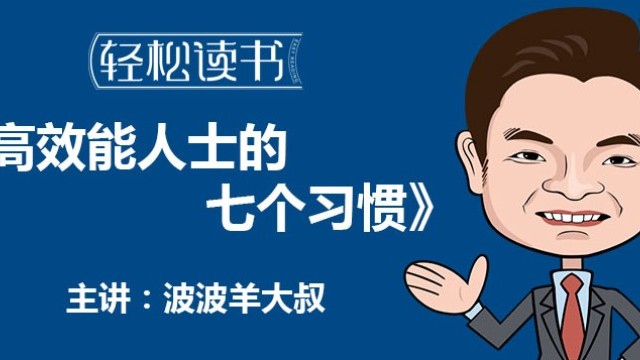TED演講的秘密:如何讓你的演講一鳴驚人
作者:蛋黃醬立里
來源:hbr
2013-06-22 14:00
Plan the Multimedia
恰當采用多媒體技術(shù)
With so much technology at our disposal, it may feel almost mandatory to use, at a minimum, presentation slides. By now most people have heard the advice about PowerPoint: Keep it simple; don’t use a slide deck as a substitute for notes (by, say, listing the bullet points you’ll discuss—those are best put on note cards); and don’t repeat out loud words that are on the slide. Not only is reciting slides a variation of the teleprompter problem—“Oh, no, she’s reading to us, too!”—but information is interesting only once, and hearing and seeing the same words feels repetitive. That advice may seem universal by now, but go into any company and you’ll see presenters violating it every day. Many of the best TED speakers don’t use slides at all, and many talks don’t require them. If you have photographs or illustrations that make the topic come alive, then yes, show them. If not, consider doing without, at least for some parts of the presentation.
現(xiàn)在為我們所用的多媒體技術(shù)數(shù)不勝數(shù),所以覺得怎么也得用幻燈片吧,什么都不用都覺得對有點不起觀眾?,F(xiàn)在大多數(shù)人都知道PPT的訣竅:保持簡潔;不要把幻燈片做成演講稿(就好比列出你所要講的每一點——這些最好寫在你手中的小卡片里);不要把幻燈片上的內(nèi)容原封不動地大聲念出來。除了可能出現(xiàn)類似于使用提詞器時會出現(xiàn)的問題之外——“我勒個去她也在照讀!”——往往只有最新鮮的信息才能調(diào)動人們的興趣,人們不喜歡重復(fù)地看到和聽到相同的信息。現(xiàn)在大家應(yīng)該都很明白這點,但如果去各種公司看看,每天依然有人在演講時犯這種錯誤。許多頂尖的TED演講者不用幻燈片,而且很多演講內(nèi)容也不需要它。如果你要展示一些照片或插圖使話題更生動的話,那就用吧,否則,至少對于演講的某些部分來說,盡量別用。
Video has obvious uses for many speakers.?Used well, video can be very effective, but there are common mistakes that should be avoided. A clip needs to be short—if it’s more than 60 seconds, you risk losing people. Don’t use videos—particularly corporate ones—that sound self-promotional or like infomercials; people are conditioned to tune those out. Anything with a soundtrack can be dangerously off-putting. And whatever you do, don’t show a clip of yourself being interviewed on, say, CNN. I’ve seen speakers do this, and it’s a really bad idea—no one wants to go along with you on your ego trip. The people in your audience are already listening to you live; why would they want to simultaneously watch your talking-head clip on a screen?
視頻對很多講者都很有用處。恰當?shù)厥褂靡曨l可以讓演講變得效果非凡,不過也有一些常犯的錯誤需要避免。視頻剪輯需要足夠短——如果長于1分鐘,你就有可能要失去觀眾了。特別需注意的是,不要使用企業(yè)視頻,這看起來像自我宣傳或資訊廣告,觀眾其實會自動屏蔽。任何帶配樂的視頻都可能會讓人倒胃口。而且無論如何,別放你自己被什么CNN啊之類采訪的視頻。我曾看過有演講者這么做,而且真不怎么樣——沒人會想要了解你的自大。觀眾已經(jīng)在你面前聽你現(xiàn)場演講了,為什么還要同時讓他們到看你出現(xiàn)在新聞采訪的特寫鏡頭中呢?
獲得更多演講技巧,你也可以學(xué)習(xí)【演講技巧與有效溝通】通關(guān)班? ?
Ultimately I learned firsthand what our speakers have been discovering for three decades: Presentations rise or fall on the quality of the idea, the narrative, and the passion of the speaker. It’s about substance, not speaking style or multimedia pyrotechnics. It’s fairly easy to “coach out” the problems in a talk, but there’s no way to “coach in” the basic story—the presenter has to have the raw material. If you have something to say, you can build a great talk. But if the central theme isn’t there, you’re better off not speaking. Decline the invitation. Go back to work, and wait until you have a compelling idea that’s really worth sharing.
總之,我親身體會了我們的講者在這30年里所挖掘出來的東西:演講的成功取決于這個想法的質(zhì)量、敘述表達的方式以及演講者的情感。這和內(nèi)容有關(guān),而不是演講的風(fēng)格或是各種絢爛的多媒體。通過訓(xùn)練,演講中的小毛病很容易就被剔除,但單靠訓(xùn)練卻沒辦法樹立起整個故事和想法本身——演講者心中必須要有貨。如果你有要說的東西,你就可以做出很贊的演講。不過如果沒有一個中心思想,那你最好是別說了。拒絕演講邀請,回去工作,等到你真正有值得分享的想法再來。











